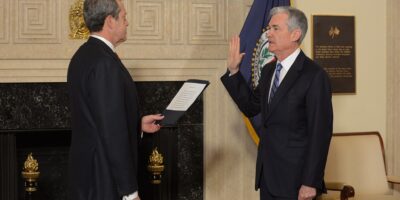A Failure to Communicate
There are few more-stringent critics of the Federal Reserve than former Congressman Ron Paul. In a recent interview with CNBC, Dr. Paul highlighted many pathologies of modern monetary policy. Perhaps the most troubling is the degree to which announcements from the Fed can affect financial markets. Even small differences in phrasing by Fed officials’ announcements can have a big impact on the economy. As Dr. Paul noted, “I think it’s always a threat because just their meeting and saying a few words one way or the other has a big effect.… They’re in a hot spot. They don’t know what to do.”
This is a problem, and it’s a sign that one of the most important lessons of monetary policy has yet to be taken seriously.
Ideally, being a central banker would be a pretty boring job. Surprises in the stance of monetary policy are almost always a bad thing. The best thing a central bank can do to achieve macroeconomic stability is to be very open about its future intended policies. Rather than trying to tinker with the macroeconomy piecemeal — something which we’ve learned the hard way that central bankers can’t do very well — monetary policy makers should provide firm forward guidance about their goals and the means they will employ to achieve those goals.
When central banks are open and honest, they anchor the expectations of financial market actors. The fundamental stance of monetary policy becomes a firm foundation on which participants in financial markets, as well as in real goods and services markets, can plan their activities going forward. But when central banks are vague and opaque, market participants have a very strong incentive to consume scarce resources, such as time and effort, by watching the central bank for a hint of what it will do down the road. This is fundamentally counterproductive to macroeconomic health. All those resources spent “Fed watching” could and should have been put to uses that are not just privately beneficial for Fed watchers, but socially beneficial as well. That means producing real goods and services, or conducting the financial transactions that best allocate scarce capital and help end-stage producers provide real goods and services.
This is not a particularly controversial position within current monetary-policy scholarship. So why do so few central banks around the world, including the Fed, seem to follow it? We have to consider the troubling but all-too-real possibility that central bankers don’t want to be plain and understandable. Plain and understandable means there’s just not that much work for central bankers to do. It may be much more fun for central bankers to exceed their mandates by picking winners and losers in financial markets by, for example, engaging in preferential capital allocation. Such activities are more efficacious when they’re a surprise. A central bank that consistently tries to shock market actors is sending a strong signal that it’s not content to remain a referee. It wants to play the game too.
Dr. Paul is not always correct in his criticisms of the Fed and modern monetary policy. Some of his positions on the desirability of a return to a gold standard, for example, do not square with basic insights into how money affects the macroeconomy, at least not without additional assumptions and details.
But his insight here is spot-on. That so much hinges not just on what the Fed says, but how it says it, is prima facie evidence of poor institutional design. We seriously need to consider the fact that the Fed doesn’t want to be understood. If so, it’s time we reconsider the whole enterprise of discretionary central banking.









